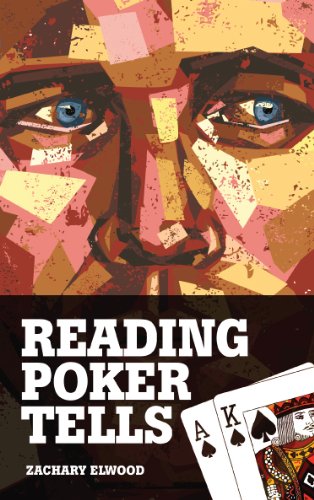Reading Poker Tells

“Reading Poker Tells” is a compelling guide that explores the fascinating world of nonverbal communication and body language in poker. Authored by a renowned expert in the field, this book provides valuable insights, practical examples, and actionable advice for players looking to improve their ability to read opponents at the poker table.
One of the greatest strengths of “Reading Poker Tells” is its comprehensive coverage of different types of poker tells. The author delves into both verbal and nonverbal cues, providing readers with a holistic understanding of the various ways opponents unknowingly reveal information about their hands. From facial expressions and body movements to bet sizing and timing tells, the book covers a wide range of tells and teaches readers how to interpret them accurately.
The author’s writing style is engaging and accessible, making the material easily understandable for players of all skill levels. The book is filled with real-life examples and case studies that illustrate the application of tell-reading techniques. These examples not only help readers grasp the concepts but also provide a practical framework for implementing the strategies at the table.
One of the standout features of this book is its emphasis on understanding the context and cluster analysis of tells. The author emphasizes that individual tells should not be relied upon in isolation but should be considered alongside other contextual information. By recognizing patterns and clusters of tells, readers can develop a more accurate understanding of opponents’ intentions and make more informed decisions.
Additionally, “Reading Poker Tells” provides valuable insights into the psychological aspects of poker and how emotions can manifest in physical behaviors. The author explores the impact of stress, anxiety, and deception on opponents’ body language and teaches readers how to detect and exploit these emotional tells effectively.
It is important to note that the book primarily focuses on live poker tells, and some of the information may be less applicable to online poker, where physical cues are not as readily available. However, the principles and concepts discussed in the book can still be valuable in online play, particularly in analyzing bet sizing, timing patterns, and verbal cues in chat boxes.
While the book provides a comprehensive understanding of poker tells, it is worth mentioning that tell-reading is not an exact science. The accuracy of interpretations may vary depending on the individual and the situation. Therefore, it is essential for readers to use tell-reading techniques as an additional tool in their poker arsenal and not rely solely on them for decision-making.
In conclusion, “Reading Poker Tells” is a valuable resource for poker players looking to sharpen their observation skills and enhance their ability to read opponents. With its comprehensive coverage of different types of tells, practical examples, and insights into the psychological aspects of the game, this book equips readers with the tools and knowledge necessary to gain a competitive edge at the poker table. Whether you are a beginner looking to develop a foundation in tell-reading or an experienced player seeking to refine your skills, this book is a worthwhile addition to your poker library.
Rating: ★★★★☆ (4/5)
